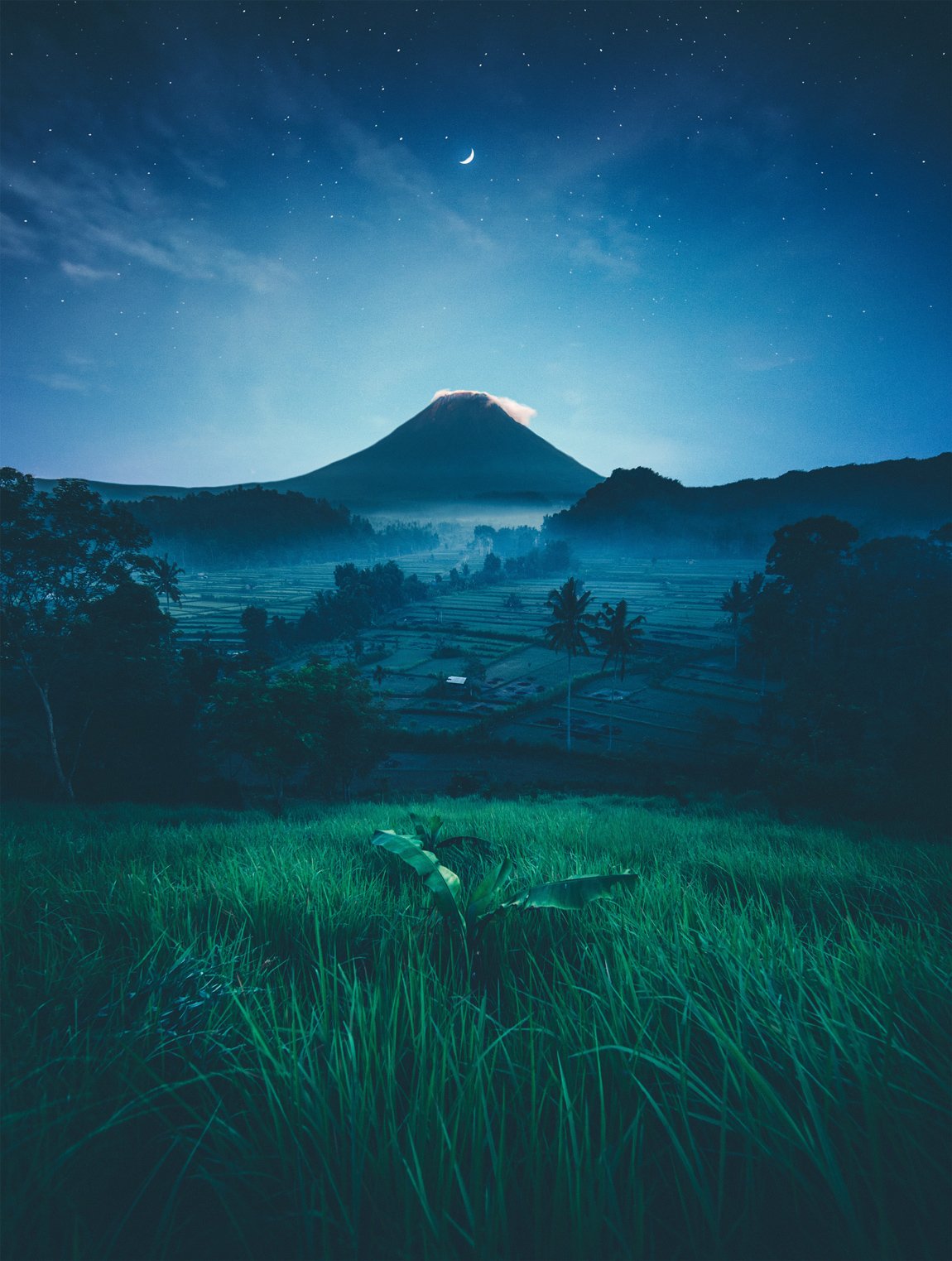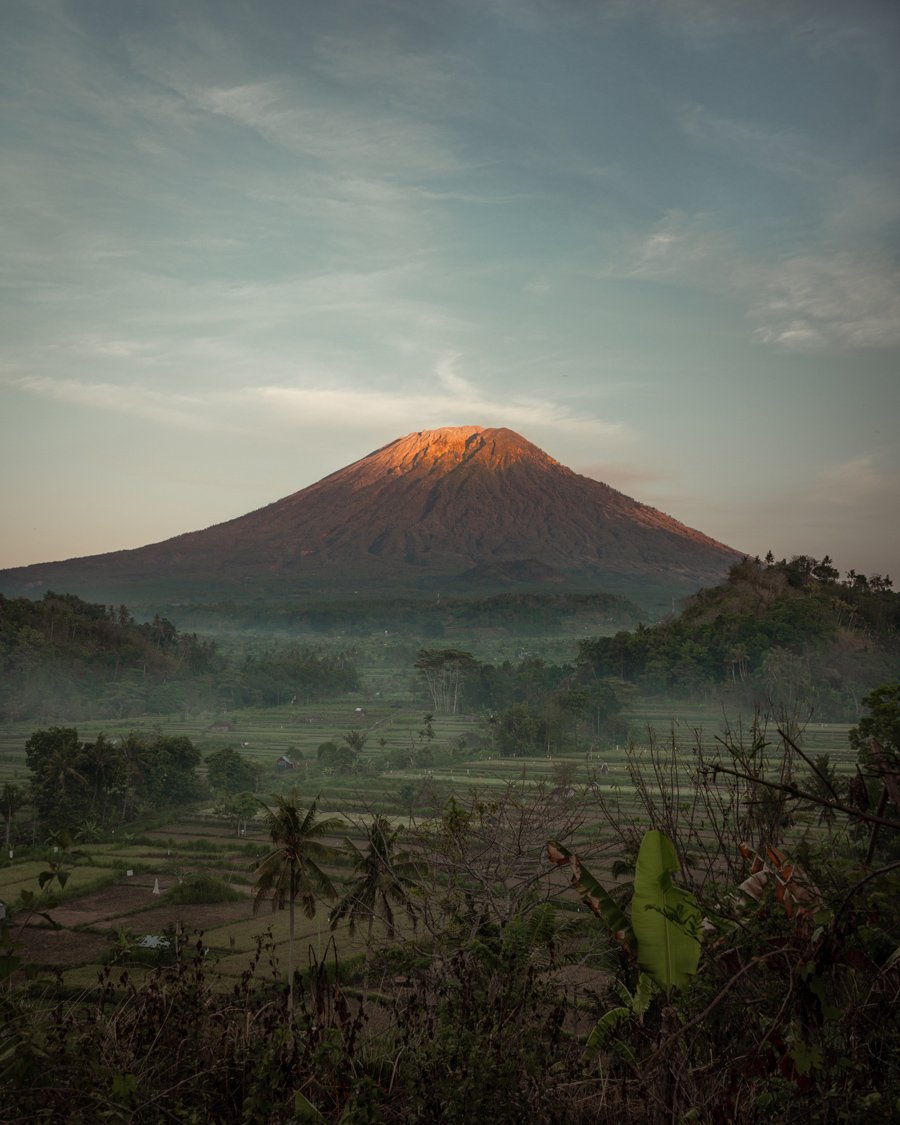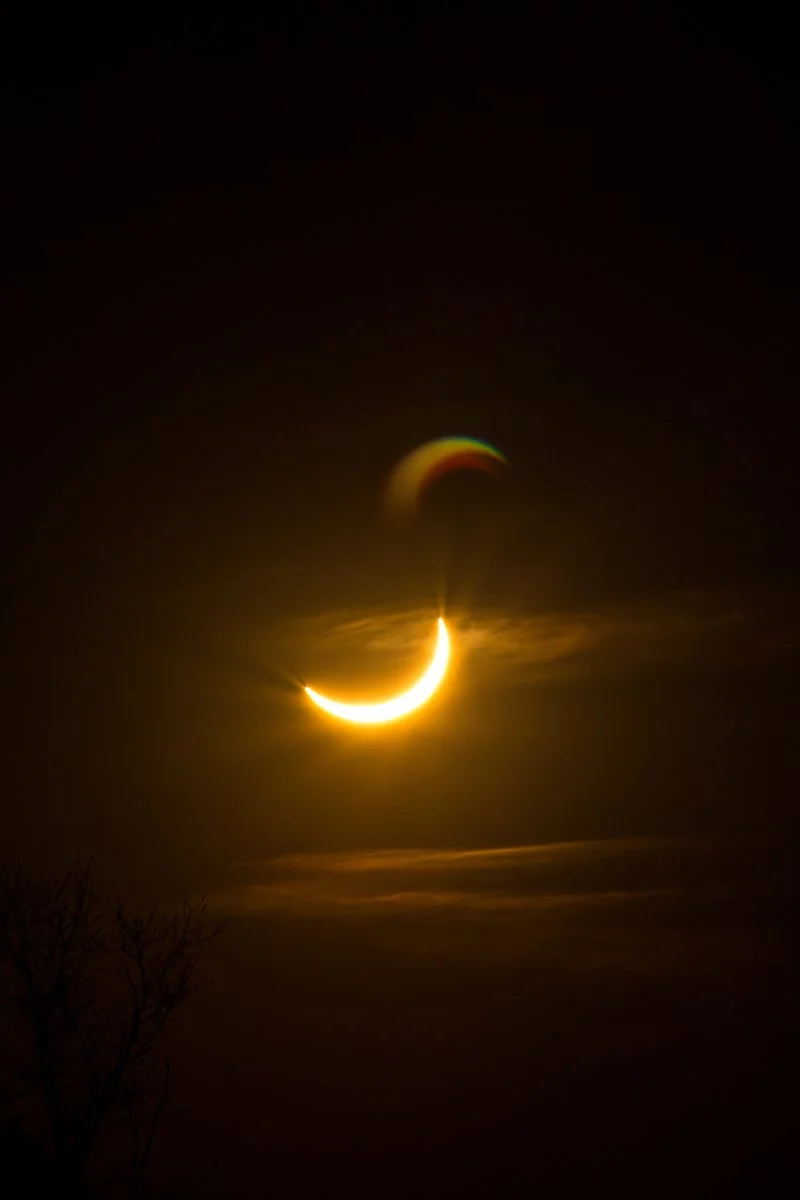
CHRIS HATHERILL
Chris Hatherill is a writer, curator and founder of creative science agency super/collider – dedicated to exploring the wonders of our planet and beyond through publications, projects and fieldtrips. He has led cultural science expeditions to Iceland, Sweden, Spain and the Southwestern United States to observe astronomical transits and solar eclipses with leading photographers, writers, illustrators and creatives. He is currently based in Asia, and works with the design-led environmental NGO, Parley for the Oceans.
For Rumah Hujan, Chris explored the skies and astronomy around the estate, aligning with the solar eclipse in April 2023. As he explains, “Even though Bali won’t witness a total eclipse this time around, the coming month will be a really special one in the skies above the island. I hope you can find a quiet night or two to go out and explore the heavens, or just relax and gaze up from the villa.
WORLDS ALIGNING
The skies above Indonesia in April are alive with planets, moons and stars aligning, and meteors fanning out across the vast, dark expanse.
Our place, in the universe
Bali is located below the Equator, meaning that visitors from the northern hemisphere see new stars and constellations usually hidden below the southern horizon. Think of it as one half of our planet looking ‘up’ into space and the other half looking ‘down’ although of course in space there is no real up or down.

The hillside that’s home to Rumah Hujan faces the sunrise, gazing out towards Bali's sacred Mount Agung in the northeast and the ‘ecliptic’ due east. This invisible line in the sky guides the sun, planets and Moon along their orbits, with small changes in their inclination creating points where things align. In April, the coming together of the sun and Moon will create one of the most awe-inspiring sights on our planet.
A NEAR MISS
As the Moon’s tilted orbit brings it past the ecliptic line in the sky, it occasionally crosses directly in front of the sun – blocking our nearest star for a few minutes and creating an otherworldly atmosphere of darkness as the two celestial bodies align. Birds and animals often call out in the false dusk, and some planets and bright stars reemerge in the daytime.
In Hindu mythology, eclipses are the result of the “Shadow Planets” Rāhu (Sanskrit: राहु) and Ketu (Sanskrit: के त)ु devouring the sun. Rāhu continuously chases Surya, the Sun deity, and occasionally swallows him. You can see a depiction of this at Pura Besakih, the Hindu temple set high on the flanks of Mount Agung.
On April 20, Bali will experience a partial eclipse* between 10:30am and 1:30pm, with the Moon covering nearly 70% of the sun.
Even with nothing on hand, you’ll experience a dimming light and be able to see the eclipse reflecting through the foliage. This is actually one of the most beautiful effects of a partial eclipse, with plants’ leaves producing dozens of tiny little crescent suns shimmering off every surface.
DARK SKIES
During the night that follows the eclipse, the Moon will remain hidden, making this the best night of the month to get out into nature and see the stars. With the Lyrid, Aquarid and Virginid meteor showers all reaching their peaks, there should be lots of shooting stars crisscrossing the sky. Find a dark spot away from bright lights, get cosy and gaze out into deep space to see them throughout the night.






